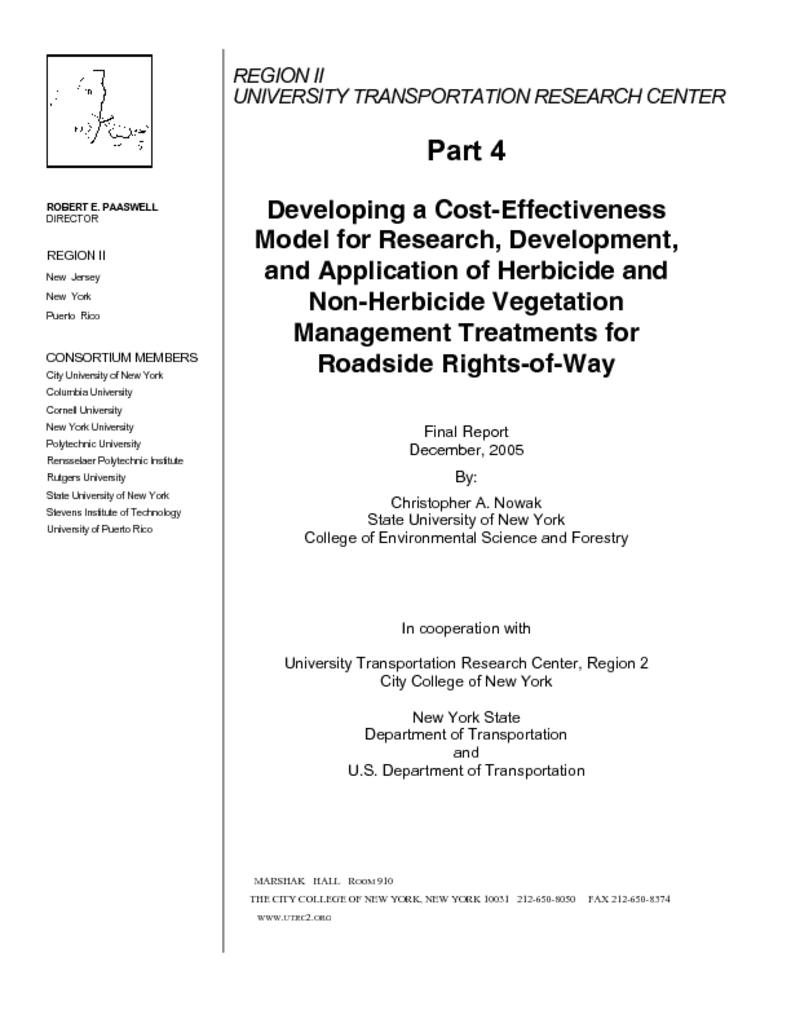Vegetation managers could use a tool to compare cost effectiveness of different non-herbicide and herbicide alternatives for treating roadside vegetation. Such a tool could be used to make informed decisions, better communicate the bases for treatment choices with various stakeholders, and direct research and development activities (focus R&D where the comparisons of different alternatives are interesting, but weak on factual information). We constructed a cost-effectiveness evaluation matrix based on expert opinion as a pilot-scale model to compare herbicide and non-herbicide alternatives for managing roadside vegetation. A Delphi process was used to rate different non-herbicide alternatives for treating roadside vegetation in comparison with conventional herbicides. The matrix was well received by the five study participants, and need not be changed for future use. Results from the pilot study indicate that a Delphi process could be used by NYSDOT to guide vegetation management choices, to better communicate with stakeholders about decision-making processes in roadside right-of-way vegetation management, and be used to guide research and development activities. Expert opinion from this pilot-scale study suggests that 1) conventional herbicide treatments are more cost effective than non-herbicide treatments, and 2) future work in nonherbicide alternatives should be focused on the use of barriers and bioherbicides in Zone 1, and the use of interference, mycoherbicides, and bioherbicides in Zone 2.


